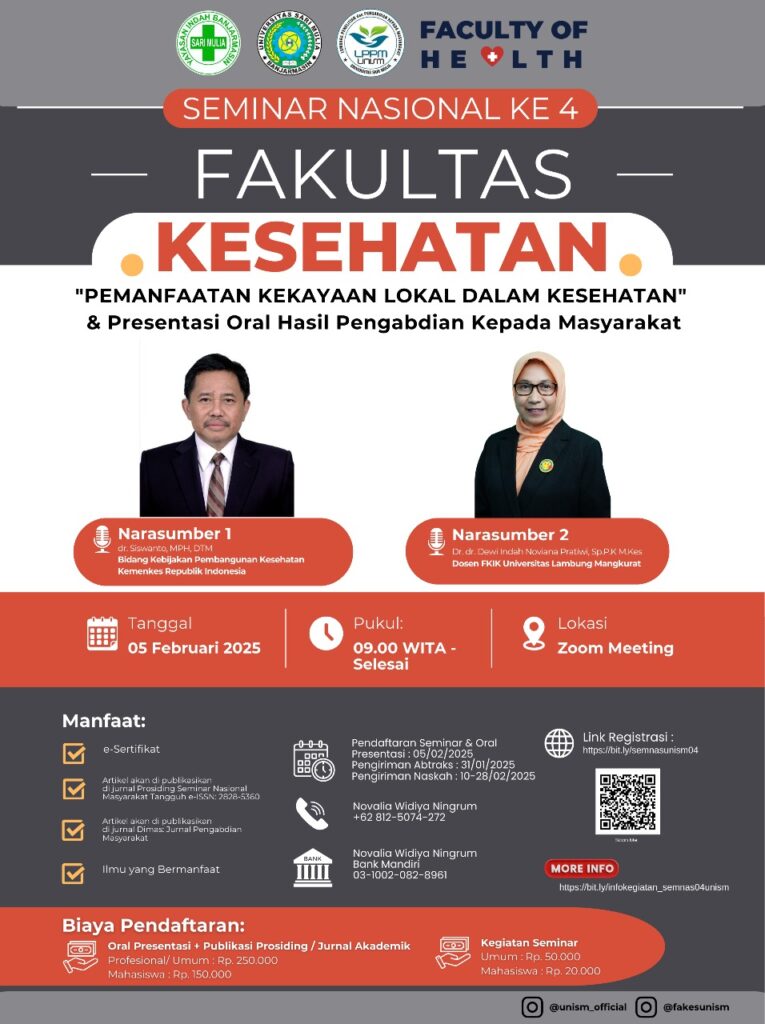E Education on Processing Liquid Soap from Activated Carbon Banana Peel and Correct Hand Washing Steps
Keywords:
Hand Washing Soap , Activated Carbon, Banana PeelAbstract
Soap is a cleanser made by a chemical reaction between potassium and sodium with fatty acids from vegetable oils or animal fats. Currently, liquid soap is widely produced because its use is more practical and its shape is more attractive than other forms of soap currently. According to the 2021 Ministry of Health regarding hand washing, people are advised to wash their hands with hand washing soap because washing hands can clean hands and nails from disease infections, dust and dirt on hands that have been active on surrounding objects that have been contaminated with bacteria and germs so that they do not infected with disease by the surrounding environment and on objects that cannot be seen by bacteria and germs with the naked eye. So there is a need to provide outreach to the public regarding how to make hand washing soap using natural ingredients and the steps for washing hands properly. One of the local raw materials that has the potential to be developed as a natural hand washing soap is activated carbon from banana peel which is widely used as traditional medicine. The aim of this activity is to educate and provide correct hand washing skills through training given to the community, especially PKK women in the Belitung Selatan sub-district of Banjarmasin about correct hand washing as well as adding insight into making hand washing soap made from activated carbon from banana peels. Based on the results of the program implementation, it was found that making soap from activated carbon from banana peels was easily understood by the PKK women partners from the South Belitung sub-district.
References
Putri, A., Redaputri, A. P., dan Rinova, D. (2022). Pemanfaatan Limbah Kulit Pisang Sebagai Pupuk Menuju Ekonomi Sirkular (Umkm Olahan Pisang Di Indonesia). Jurnal Pengabdian UMKM, 1(2), 104–109. Diambil dari https://jpu.ubl.ac.id/index.php/jpu/article/view/20%0Ahttps://jpu.ubl.ac.id/index.php/jpu/ article/download/20/20
Hatina, S., Winoto, E., Antoni, A., dan Febriana, I. (2021). Pengaruh Karbon Aktif Kulit Pisang Putri Pada Limbah Ammonia. Jurnal Redoks, 6(1), 7. https://doi.org/10.31851/redoks.v6i1.5244
Alawiyah, T., Yuwindry, I., dan Rahmadani. (2022). Potensi Karbon Aktif Kulit Pisang Dalam Penurunan Kadar Amonia di Sungai Barito Menggunakan Metode Spektrofotometri Uv-Vis. Junal Katalisator, 7(2), 227–237. https://doi.org/10.22216/jk.v5i2.5717
A. Nursanti, I. H. Suparto, dan T. Kemala, “Aktivitas Antibakteri dan Uji Fitokimia Senyawa Metabolit Sekunder dari Limbah Kulit Pisang Kepok (Musa acuminata x balbisiana), Kulit Pisang Uli (Musa Paradisiaca Sapientum), dan Kulit Pisang Nangka (Musa sp L),” Al-Kimia, vol. 6, no. 2, hal. 129–134, 2018.
S. Someya, Y. Yoshiki, dan K. Okubo, “Antioxidant compounds from bananas (Musa Cavendish ),” vol. 79, hal. 351–354, 2002.
Aisyah, & Karmina, M. (2021). Promosi Kesehatan Praktik Mencuci Tangan 6 Langkah Sesuai Panduan WHO Pada Santri TPA An-Nur Ciputat Tangerang Selatan Guna Mencegah Penularan Covid-19. Journal of Community Engagement in Health, 4(2), 388–392. https://jceh.org/index.php/JCEH/article/view/257/166
A. Nursanti, I. H. Suparto, dan T. Kemala, “Aktivitas Antibakteri dan Uji Fitokimia Senyawa Metabolit Sekunder dari Limbah Kulit Pisang Kepok (Musa acuminata x balbisiana), Kulit Pisang Uli (Musa Paradisiaca Sapientum), dan Kulit Pisang Nangka (Musa sp L),” Al-Kimia, vol. 6, no. 2, hal. 129–134, 2018.



